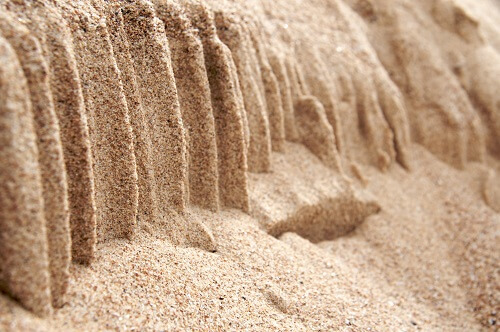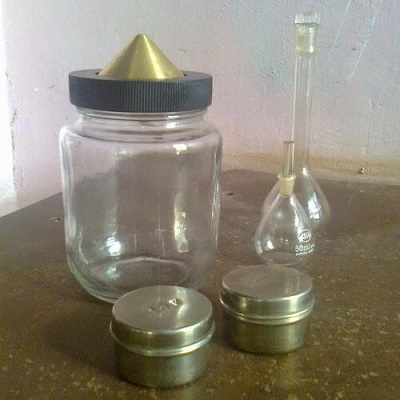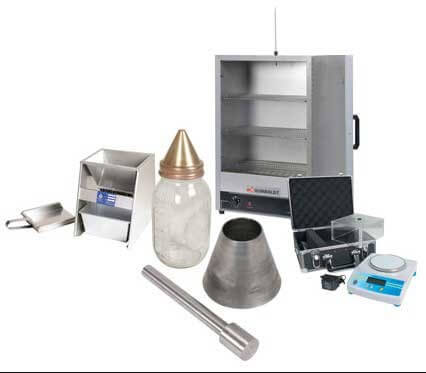What is the Specific Gravity of Sand?
Mainly Specific Gravity is the ratio of the density of a substance to the density of a reference substance at a fixed temperature. Similarly, it is the ratio of the mass of a substance to the mass of a reference substance. And the theme is also the same for the fine aggregate sand. Specific Gravity of sand is the ratio of the density or mass of sand to the density or mass of a reference substance.
But in both of the state's density or mass, the volume should be the same. If the volume does not remain the same the specific gravity has no existence then. Because the mass or density will be changed of the substance or reference substance.

Standard Value of Specific Gravity of Sand
The considerable specific gravity is around 2.65 for sand. Which is mainly the ratio of the weight of the given volume of aggregates to the weight of an equal volume of water. But normally in the road construction ranges from about 2.5 to 3.0 with an average of about 2.68. This is mainly composed of quartz have a specific gravity ranges from 2.65 to 2.67. Inorganic clay generally ranges from 2.70 to 2.80. Soils with large amounts of organic matter or porous particles have specific gravities below 2.60. Some range as low as 2.00. Tropical iron-rich laterite, as well as some lateritic soils, usually have a specific gravity of between 2.75 and 3.0 but could be higher. Water absorption shall not be more than 0.6 per unit by weight.
|
Types of Sand |
Specific Gravity value |
|
Normal Sand |
2.65-2.67 |
|
Silty Sand |
2.67-2.70 |
|
Inorganic Clay |
2.70-2.80 |
|
Sands with iron |
2.75-3.00 |
|
Organic Sands |
< 2.00 |
Reference Substances for Specific Gravity
Most of the time water is used as a reference substance for sandy soil. And its temperature should be near 4°C. For gases, it is air at room temperature 25°C. But sometimes it should take 23°C. This test is similar in nature to the coarse aggregate specific gravity test.

How to Calculate Sand Specific Gravity?
The fine aggregate specific gravity test measures its weight under three different sample conditions:
- Oven-dry (no water in the sample).
- Saturated surface dry (water fills the aggregate pores).
- Submerged in water (underwater).
Required Equipment

Followings are the required equipment:
- Pycnometer; volumetric flask (500-milliliter capacity).
- Laboratory oven.
- Heat-resistant gloves.
- Balance scales sensitive to 0.01 grams.
- Pudding pans.
- Battery-filler syringe.
- Cloth towels.
- Paper towels.
- Hot plate.
- Evaporating dish.
- Distilled water.
{adselite}
Specific Gravity Test Procedure for Fine Aggregate Sand
The Steps should follow be followed for determination:
- Calibrate the pycnometer.
- Weigh a clean, dry pycnometer to the nearest 0.01 gram.
- Fill the pycnometer with room-temperature distilled water. Ensure that the bottom of the meniscus is even with the calibration mark.
- Weigh the pycnometer plus water.
- Use the thermometer to determine the water temperature to the nearest whole degree.
- Create a graph or table for the pycnometer being used.
Calculation
The Required Rules for Determination:
\[W_{bw}(for \;\;specific \;\;temperature,\; T_{x})=\frac{\rho_{w}(T_{x})}{\rho_{w}(T_{i})}\times[(W_{bw} \;\;at \;\;T_{i})-W_{b}]+W_{b}\]
Where—
ρw (Tx) = density of water identified by temperature (Tx))
ρw (Ti) = density of water identified by temperature (Ti)
Wbw = weight of pycnometer and water, in grams
Wb = weight of pycnometer, in grams
Ti = observed/recorded temperature of the water, in °C
Tx = any other desired temperature, in °C
Purpose, Benefit and Use of Sand Specific Gravity
The specific gravity of Sand is used for applications including Superpave mix design, deleterious particle identification and separation, and material property change identification. Perform this test to determine the specific gravity of solids (which will be used to assist in the hydrometer-analysis test) and to calculate the zero-air-voids curve for compaction results.

